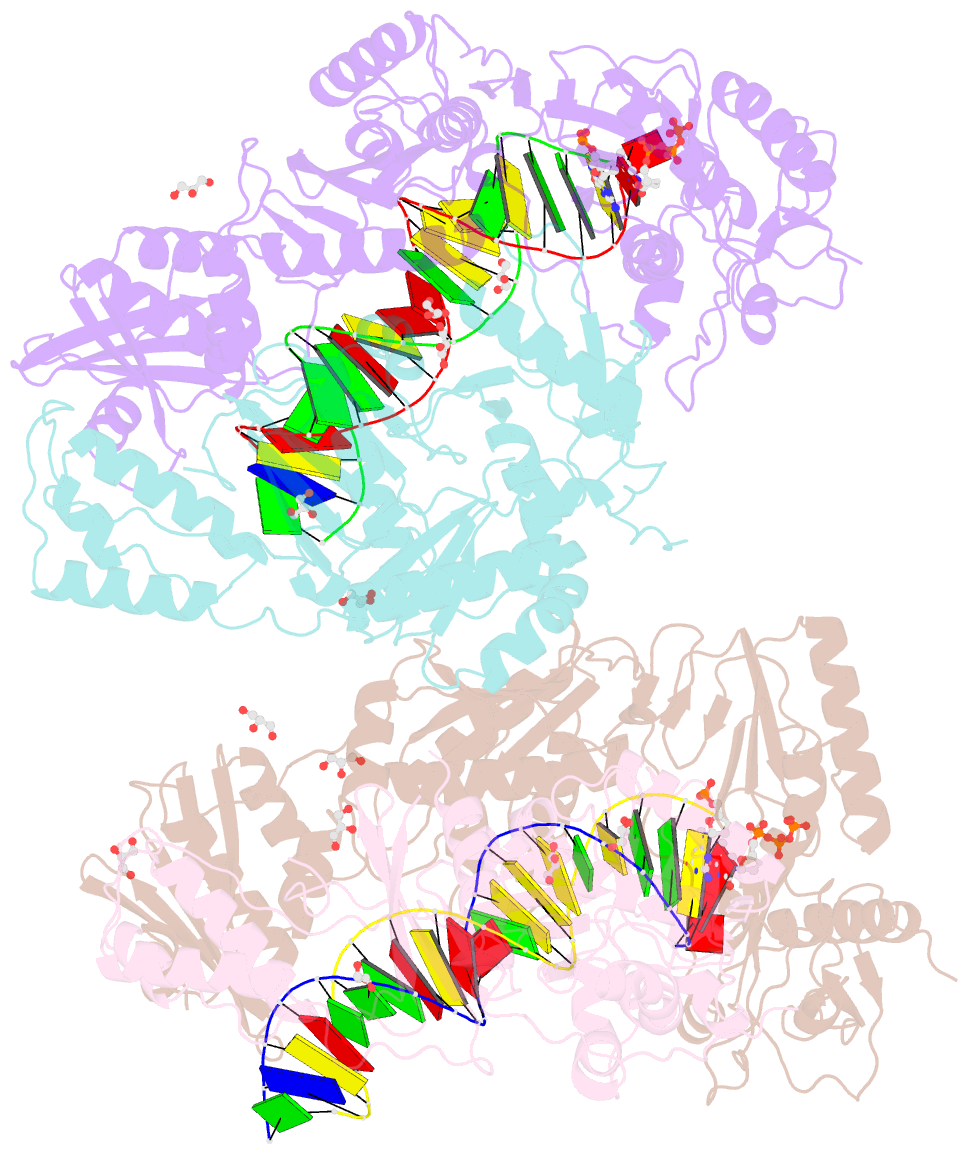Summary information and primary citation
- PDB-id
- 6amo; SNAP-derived features in text and JSON formats;
DNAproDB
- Class
- transferase-DNA
- Method
- X-ray (2.497 Å)
- Summary
- Structure of hiv-1 reverse transcriptase (rt) ternary complex with a double stranded DNA and an incoming d4ttp at ph 7.0
- Reference
- Martinez SE, Bauman JD, Das K, Arnold E (2019): "Structure of HIV-1 reverse transcriptase/d4TTP complex: Novel DNA cross-linking site and pH-dependent conformational changes." Protein Sci., 28, 587-597. doi: 10.1002/pro.3559.
- Abstract
- Stavudine (d4T, 2',3'-didehydro-2',3'-dideoxythymidine) was one of the first chain-terminating nucleoside analogs used to treat HIV infection. We present the first structure of the active, triphosphate form of d4T (d4TTP) bound to a catalytic complex of HIV-1 RT/dsDNA template-primer. We also present a new strategy for disulfide (S-S) chemical cross-linking between N6 of a modified adenine at the second overhang base to I63C in the fingers subdomain of RT. The cross-link site is upstream of the duplex-binding region of RT, however, the structure is very similar to published RT structures with cross-linking to Q258C in the thumb, which suggests that cross-linking at either site does not appreciably perturb the RT/DNA structures. RT has a catalytic maximum at pH 7.5. We determined the X-ray structures of the I63C-RT/dsDNA/d4TTP cross-linked complexes at pH 7, 7.5, 8, 8.5, 9, and 9.5. We found small (~0.5 Å), pH-dependent motions of the fingers subdomain that folds in to form the dNTP-binding pocket. We propose that the pH-activity profile of RT relates to this motion of the fingers. Due to side effects of neuropathy and lipodystrophy, use of d4T has been stopped in most countries, however, chemical modification of d4T might lead to the development of a new class of nucleoside analogs targeting RNA and DNA polymerases.





